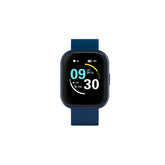In nearly every Singaporean household today, the question of screen time has become a familiar one. For many secondary school students, screens are no longer just entertainment — they’re a part of daily life. Homework is submitted through portals, discussions happen on WhatsApp, and tuition may be conducted over Zoom. At the same time, those same screens are also doorways to TikTok, gaming marathons, and endless social scrolling.
It’s a double-edged sword — and both teens and parents know it.
Balancing screen time with focused study is no longer a matter of switching off devices. Instead, it’s about setting healthy boundaries, building trust, and finding a rhythm that supports learning without burning out.
The Fine Line Between Learning and Distraction
For many teens, the shift between school and screen is almost invisible. One moment, they’re researching for a project. The next, a notification pulls them into a rabbit hole of memes or videos. It's not always intentional — but it's a pattern that can easily lead to late nights, poor concentration, and growing frustration for both parent and child.
Still, screens aren’t the enemy. In fact, used purposefully, technology can be one of the most powerful tools for learning, organising, and self-motivation.
Building Structure Without Resistance
Instead of battling devices, families can work together to create a structure that works. A study plan — even something as simple as “45 minutes of work followed by a 10-minute break” — helps teens stay focused without feeling overwhelmed. Using visual tools like whiteboards, planners, or shared calendars can make this routine feel collaborative, not imposed.
And it’s not just about the when, but the where. Creating “no-screen zones” in the house — perhaps no phones at the dining table, or no YouTube in bed — offers natural breaks that help teens switch off. In return, these offline spaces often become the very moments when families talk, laugh, or reconnect.
Let Tech Work for You
There’s an irony in using technology to manage technology — but in the right ways, it works. Focus apps like Forest gamify concentration by encouraging users to stay off their phones while a virtual tree grows. Other tools gently track screen usage to create awareness without shaming.
Some parents also opt for simple wearable devices — smartwatches with step counters or reminders — as a way to help teens stay on track without needing full access to a phone. These small shifts can go a long way in building discipline and independence.
The Importance of Non-Screen Time
Even the most disciplined students need breaks — but not all breaks should involve more screens. Encouraging your teen to take a quick walk, stretch, or just stare out the window for five minutes can reset their focus far better than watching another reel.
These pauses are not just good for the eyes, but for the mind. They allow room for daydreaming, problem-solving, or just being still — all crucial for growing brains that are often over-scheduled and overstimulated.
Conversations Over Control
Perhaps the most overlooked (and most important) part of screen-time management is communication. Teens don’t want to be lectured — but they do want to be heard. Instead of laying down hard rules, start by asking questions: “Which apps help you focus best?” or “Do you feel more tired after long screen sessions?”
When teens feel part of the decision-making, they’re far more likely to engage with responsibility and self-awareness. It’s not about control — it’s about partnership.
A Balanced Digital Life
In the end, managing screen time isn’t about counting hours — it’s about teaching mindfulness. Screens will continue to be part of school life and social life, but with a little structure, regular check-ins, and a healthy mix of offline moments, teens can learn to take control of their time and energy.
And that, perhaps, is the most valuable skill of all.


